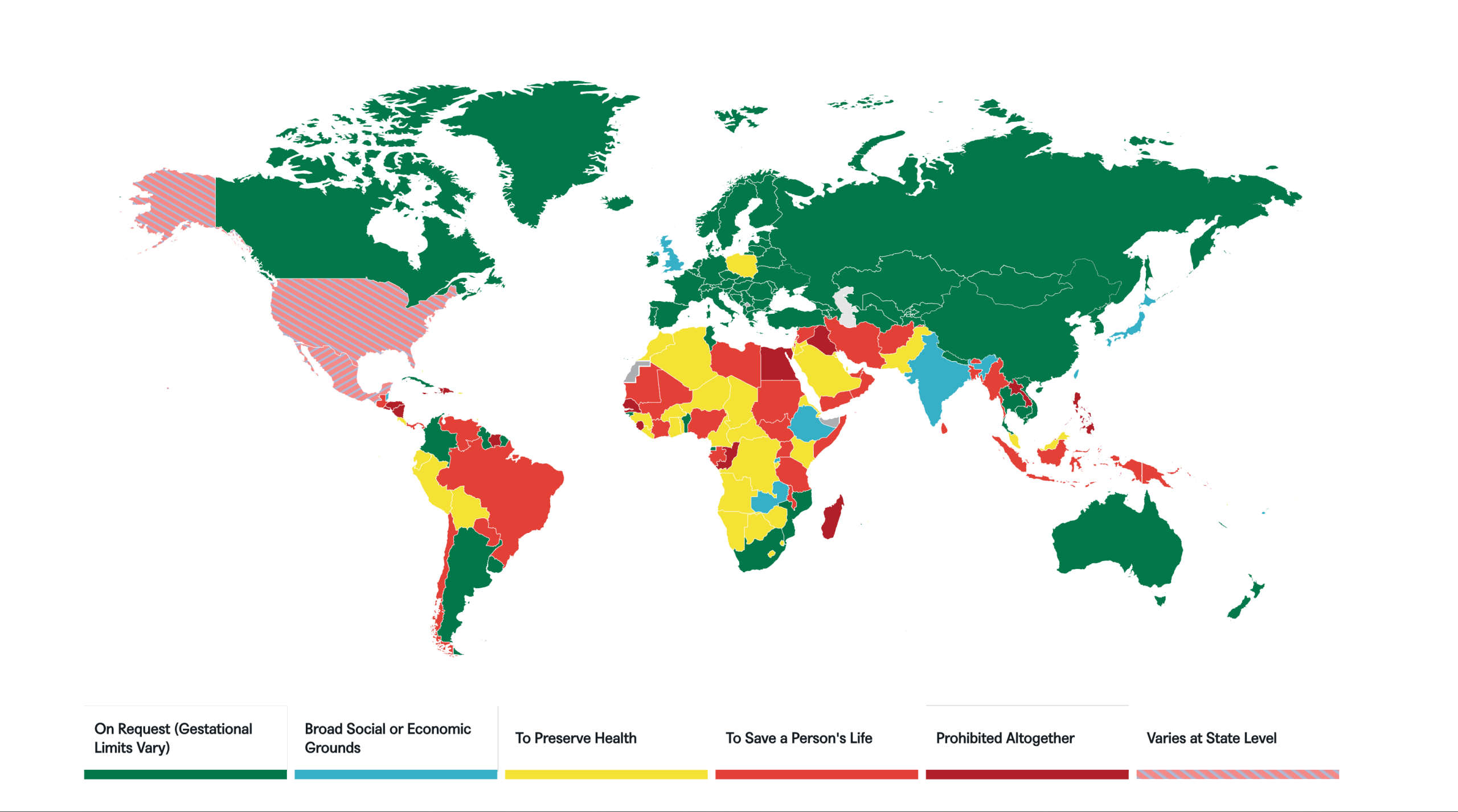GLOBAL ABORTION FACTS AT A GLANCE
Abstracted from Guttmacher Institute’s Induced Abortion Worldwide 2022 Fact Sheet
Global Abortion Data
- Approximately 3 in 10 pregnancies globally end in induced abortion (WHO 2024).
- 60% of the world’s population live where abortion is broadly legal; 40% live under restrictive laws (CRR 2022a).
- Legal restrictions do not decrease abortion rates, but make abortions much less safe, and many global organizations have called for decriminalization (FIGO 2022, WHO 2022).
- Many people are denied abortion even where it is legal (ANSIRH).
Contraceptive Use
- Globally, about half of all people capable of pregnancy want to avoid a pregnancy; of these, about 75% are using contraceptives (UN 2022).
- A greater proportion of people in non-industrialized countries have an unmet need for contraception, leaving many at risk for pregnancy (Guttmacher 2020).
- Reducing the unmet need for modern contraception globally can decrease rates of maternal and infant mortality (Guttmacher 2017).
Safety Of Abortion
- Abortions are safer where laws are less restrictive and also in countries with higher gross national incomes (Guttmacher 2022).
- Unsafe abortion is considered as either a) a procedural abortion performed by a person lacking the necessary information or skills or b) one that occurs in an environment not conforming to minimal health standards, c) both (WHO 2024).
- Stigma is a recognized contributor to maternal morbidity and mortality from unsafe abortion, even where abortion is legal (Seewald 2019).
- There are ~39,000 deaths per year from unsafe abortions (WHO 2021), which equates to 5-13% of maternal deaths worldwide. This is likely an underestimate.
World’s Abortion Laws
- In 1994, 179 countries signaled their commitment to prevent unsafe abortions and reduce pregnancy-related mortality by signing the first international consensus document recognizing reproductive rights as human rights (CRR 2020).
- The last 25 years have seen an overwhelming global trend toward the liberalization of abortion laws, with nearly 50 countries worldwide enacting laws expanding legality and only 4 rolling back legality (CRR 2020).
- Abortion legality by country is summarized in the map below.
- Abortion rates tend to be higher in countries that restrict abortion access than those that do not (Bearak 2020).
The World’s Abortion Laws
See Center for Reproductive Rights for interactive versions updated in real time (CRR 2022a). Green: On request, gestational limits vary. Teal: Broad social or economic grounds. Yellow: To preserve Health. To preserve a person’s life. Dark Red: Prohibited altogether. Striped Red: Varies at state level.
